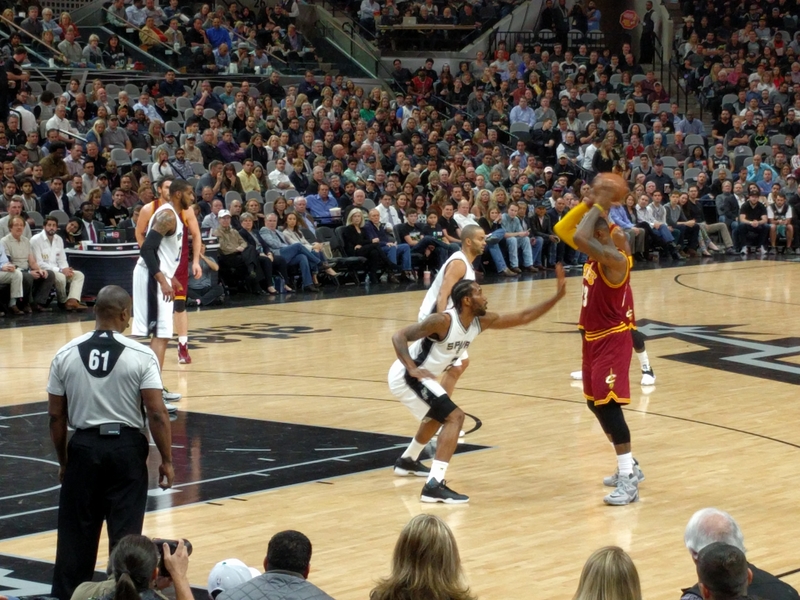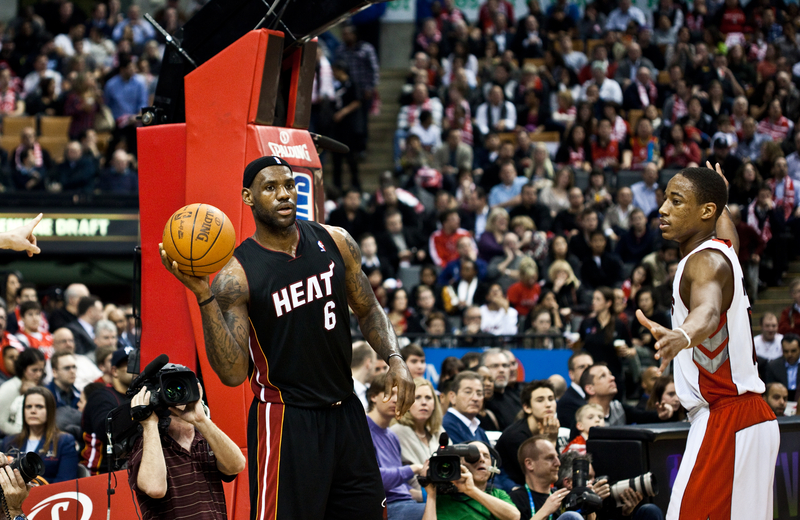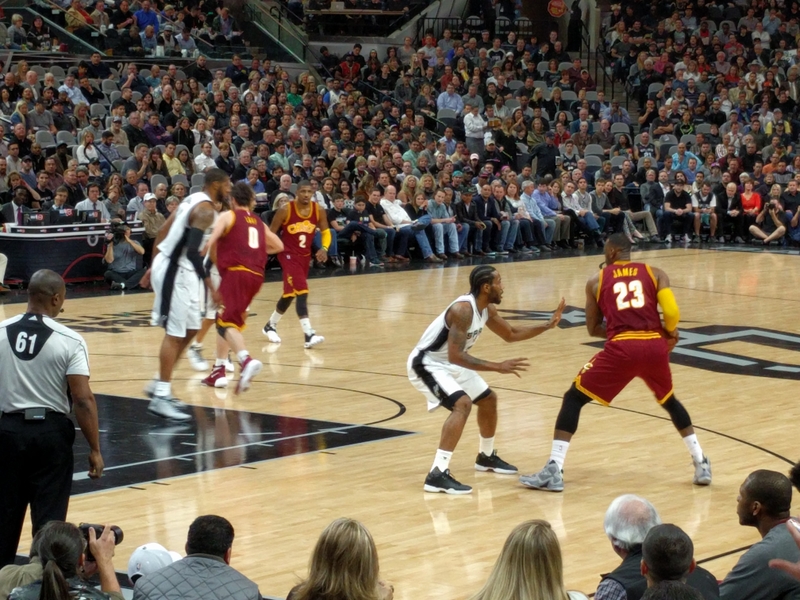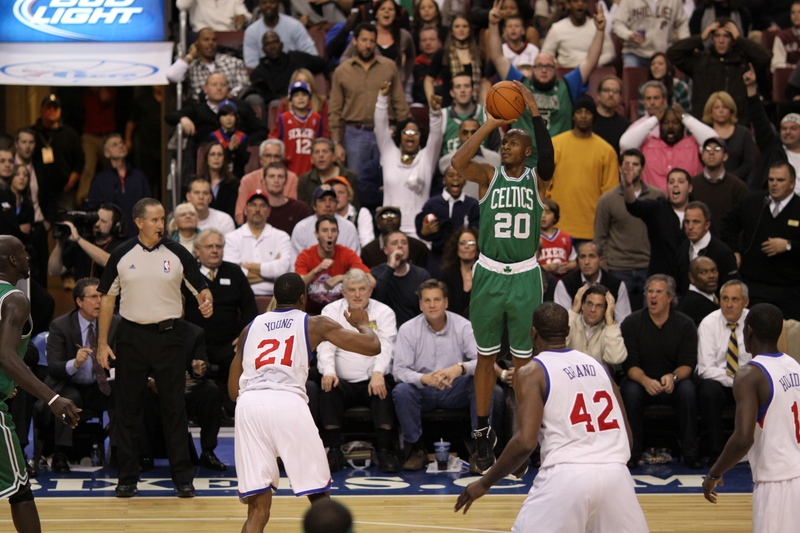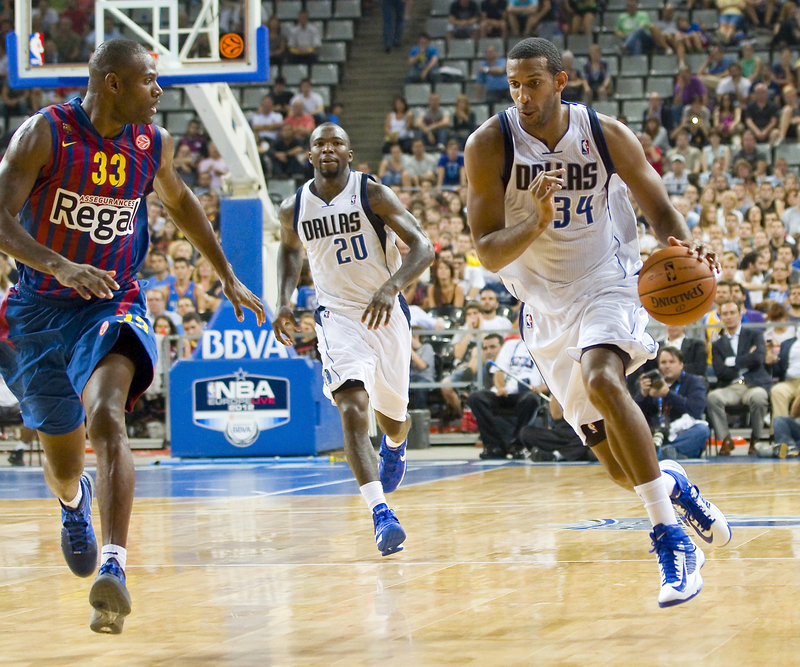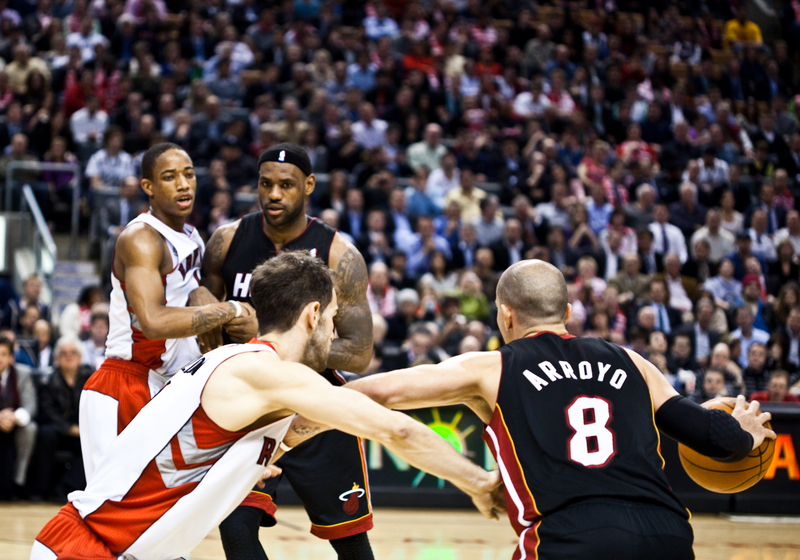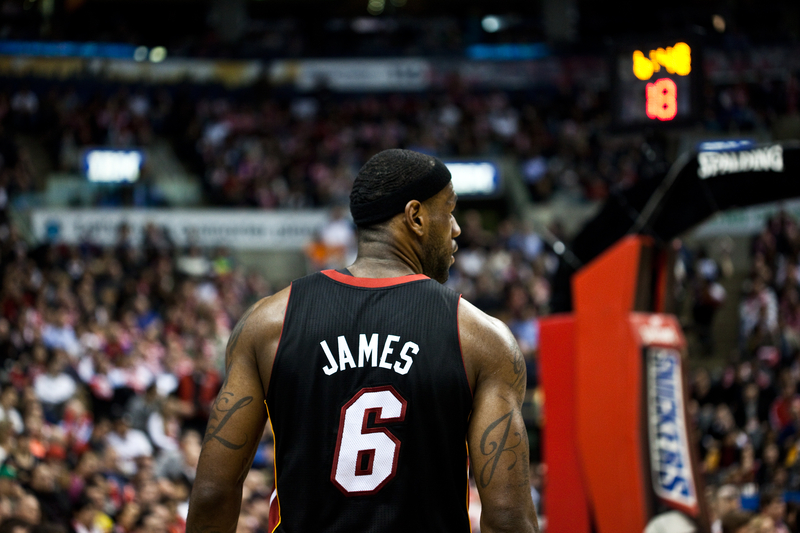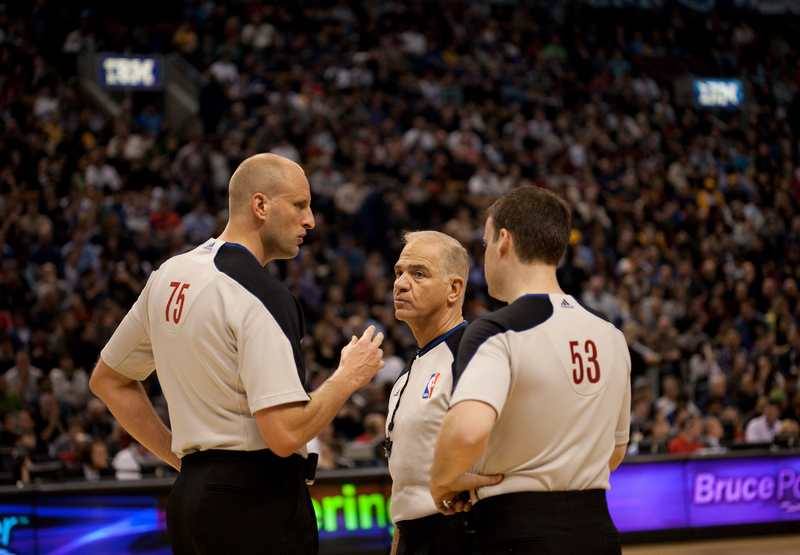Last updated on October 25th, 2023 at 07:36 am
In basketball, pivoting is when a player stands still and only steps with one foot. The player must have the ball to perform a pivot, and the same foot must always stay on the floor. The foot that stays on the floor is known as the pivot foot. Pivoting allows the player to change directions after picking up the ball from dribbling.
But what exactly is the pivoting movement during a basketball game? Is there more than one way to perform a pivot? And what happens if a player does not pivot correctly? Is there a call or violation that takes place for an incorrect pivot?
Here is the complete breakdown of basketball pivoting.
What is the Pivoting Movement in a Basketball Game?
The basketball player should choose a foot already on the floor as their pivot foot. Once the player has made that choice, this foot must remain on the floor while they perform the pivot with the ball. From here, the player should have their legs bent and step either forward or backward. A backward pivot is also known as a “reverse pivot.”
During their pivot, the player should be able to bring their chin to their shoulder. Bringing the chin to the shoulder will ensure the player can see behind them and be aware of any defenders nearby. As the player pivots, they should be able to find an opening to pass the ball to an open player or shoot the ball to the hoop.
What Are the Two Ways to Pivot in Basketball?
There are two ways to pivot in basketball: a forward pivot and a reverse pivot. If a player wants to perform a forward pivot, they would plant one foot, such as the left foot, and step forward with the right foot.
Alternatively, if that same player wants to perform a reverse pivot, they would step their right foot backward. Remember that the pivot foot should never move from the pivot point.
Though the ball handler usually performs pivots, they can also be done by a post player close to the goal. Here, the player will perform a jump stop, where both feet are planted firmly on the floor. From here, the low post player can choose whichever pivot foot they prefer and perform either a front pivot or a reverse pivot.
Can You Jump After a Pivot in Basketball?
Technically, you can jump after you perform a pivot in basketball. However, it is essential to remember that you must either pass or shoot the ball before your pivot foot touches the floor again. If you still possess the ball after you pivot and then jump, you will be guilty of a traveling violation.
Additionally, you cannot drop the ball as you jump and then be the first player to touch the ball. You risk having a double dribble violation if this is the case. Remember: the only reason you can jump after performing a pivot is to either shoot the ball or pass the ball.
Can You Pivot Then Dribble in a Basketball Game?
Sometimes, a player can pivot and then dribble. For instance, if a player catches the ball when at least one foot is already on the floor, they are then allowed to use that foot as their pivot foot. They can then use their non-pivot foot to step either forward or backward to perform their pivot.
However, it is important to remember that a player cannot dribble, perform a pivot, and then dribble again. This dribble to pivot then back to a dribble would result in the player having a double dribble. A double dribble occurs when the player dribbles the ball, picks it up for whatever reason, performs a pivot, and then dribbles again.
Does it Count as a Step?
Since the ball-handler’s pivot foot remains firmly on the floor, pivoting does not count as a step in basketball. The player may drop step and pivot as often as they need to within five seconds. A violation will be called if a pivoting player has not passed or shot the ball or started dribbling within those five seconds.
It is important to remember that the pivot foot must stay firmly on the floor to avoid a traveling violation called. Keeping the pivot foot firmly on the floor means that a player can only step with their non-pivot foot. As soon as the pivot foot is lifted, the player must either pass or shoot. If their pivot foot comes back down to the floor while the player is still in possession of the ball, they risk a violation.
How Does Pivoting Help a Basketball Player?
Pivoting can be very beneficial to a basketball player in several ways. A ball-handler may be able to pivot their way around a defender. Additionally, if a basketball player finds themselves in a tight spot, pivoting can help buy them some time to find an open teammate to pass the ball to. Pivoting may also help open a basketball player up to take a lay-up or a jump shot.
Basketball pivoting is one of the fundamental footwork skills that any beginner ball-handler should learn. Pivoting is a skill that can help basketball players out of a variety of different tight spots. Some of these tight spots may include being trapped by a defender. Pivoting and reverse pivoting can help the player find a teammate to pass to. It can also help open yourself up for a good shot or to dribble your way past defenders.
What Happens if You Do Not Pivot Correctly?
The usual result of pivoting incorrectly is risking a traveling violation. It can be straightforward for the pivot foot to lift off or slide across the floor. Both actions would result in a traveling violation being called on the basketball player. This is why it is important to practice using the correct form for a pivot.
Players should have their knees slightly bent and their feet about shoulder-width apart. Make sure that you are not off-balance while pivoting. Tipping over or tripping while attempting a pivot can also result in a traveling violation. Also, if a player gets into a tricky situation and panics without correctly remembering how to perform a pivot, it can cause a turnover.
Conclusion: What Does Pivoting Mean in Basketball?
In summary, pivoting is when a player keeps one foot firmly fixed on the floor and steps forward or backward with their non-pivot foot. Pivoting can help basketball players get past defenders to find open teammates to pass to. It can also help them free themselves for an open shot or to dribble past their defenders. There are two fundamental ways to pivot: forward pivoting and reverse pivoting.
A player can jump after pivoting, but they must not be in possession of the ball when their feet touch the floor. A traveling violation will be called on the player if this is the case. Likewise, a player may dribble after their pivot, but only if they did not dribble before performing the pivot. Doing this will result in a double-dribble violation.
Finally, pivoting does not count as a step as long as the pivot foot remains firmly fixed to the floor. A player can pivot and reverse pivot as many times as they need to within five seconds, or a violation will occur. Hopefully, with correct pivoting, the player can find an open teammate or make that game-winning shot.
Similar Posts:
What is a Carry in Basketball?
What is the Pick and Roll in Basketball?
What is a Rebound in Basketball?
Backcourt Violation in Basketball
How Tall is a Basketball Hoop?
How Long is a Basketball Game?
Greg Kristan, owner of The Stadium Reviews, LLC and TM Blast, LLC, brings his extensive experience visiting over half of the MLB ballparks, along with numerous MLS, NHL, NBA, and NFL venues, to provide in-depth coverage on the bag policy, food options, and parking. He has also been interviewed about his experiences on several sports podcasts.

